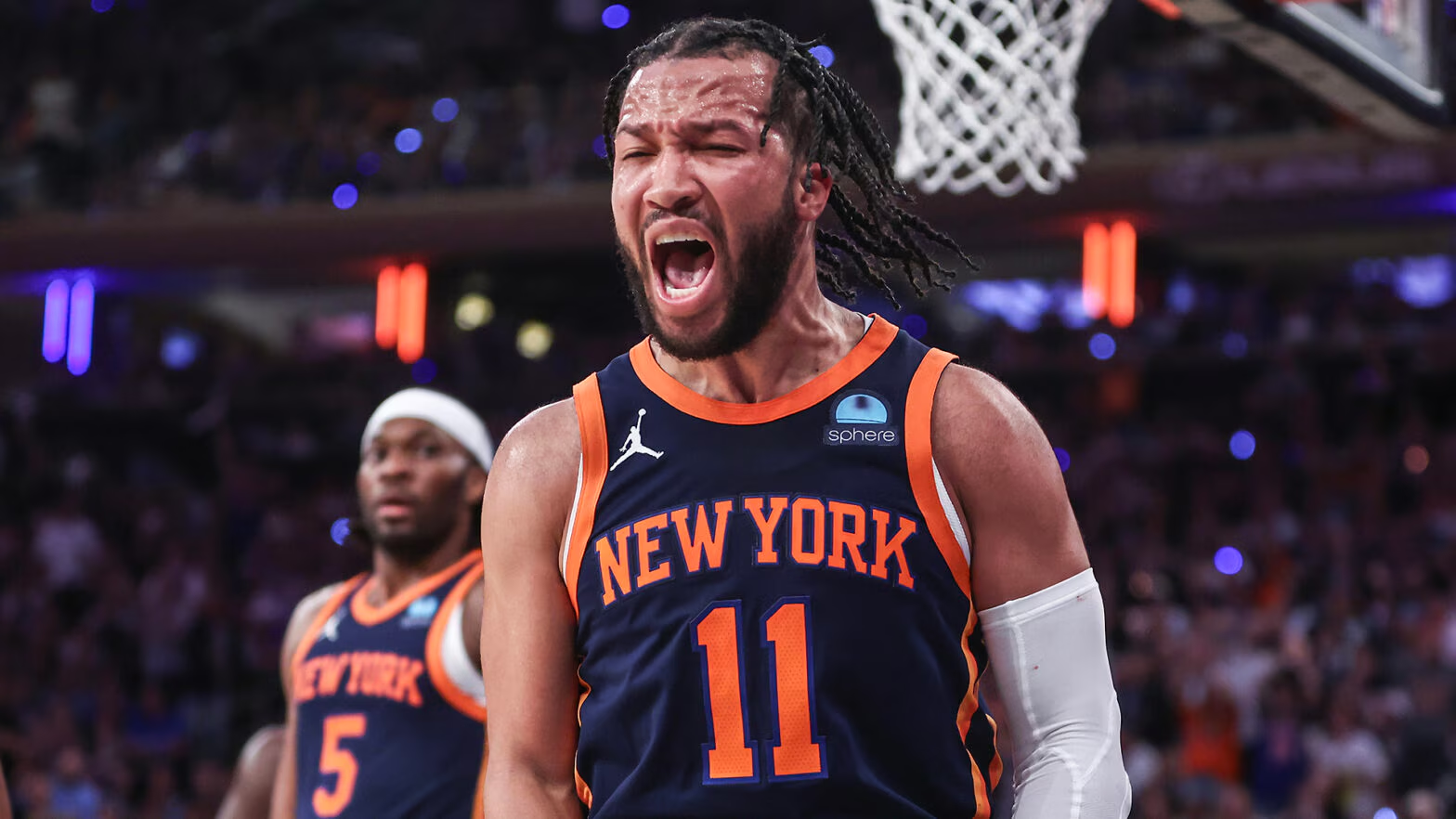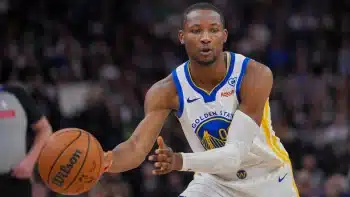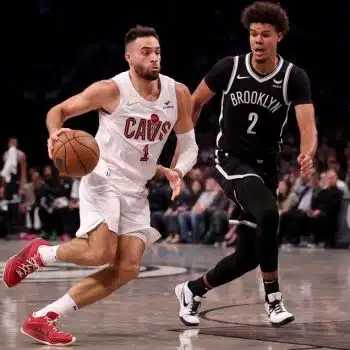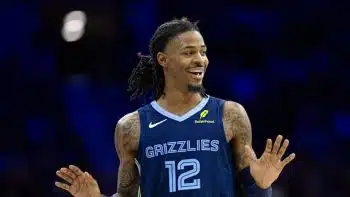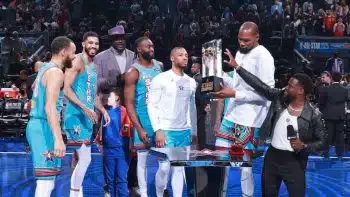NBA
NBA Sunday: Greg Monroe Thriving
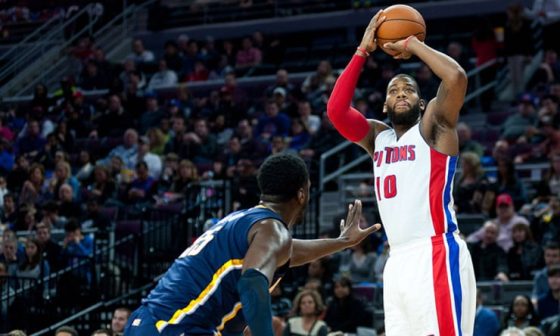
It was a simple enough play, one devoid of any special flash or any highlight-reel-worthy material.
Kyle Singler’s missed three-pointer caromed off of the back rim and found its way into the big, waiting hands of Greg Monroe, who was stationed at the top of the key.
It was the first offensive rebound of Monroe’s career-high 21 rebounds that came on Friday night, where he led the Pistons to a 98-88 victory over the visiting Denver Nuggets.
Monroe secured the rebound and jab-stepped twice while Kenneth Faried closed in on him. Realizing that his defender was slightly off-balance, Monroe, the southpaw, put his head down and drove toward the basket from the top of the key. With Faried on his hip, Monroe took two dribbles and floated a one-handed lefty hook shot over the outstretched arms of his defender.
As the shot found the bottom of the net, he simply ran back on defense. It was a good play, but a routine one for the 24-year-old. And it certainly would not be the last play of the day that he would make.
Two hours later, with the game hanging in the balance and the Nuggets mounting a rally, the Pistons trusted Monroe to initiate their offense and make plays from the post. His two critical assists—one to D.J. Augustin and the other to Jonas Jerebko—helped his team preserve the victory.
Afterward, he let everyone in on a secret.
“I lost my grandmother this morning,” Monroe told the assembled media. “So this definitely means a lot to me.”
And with his spirited performance and rejuvenated play over the past few weeks, Monroe has meant more to his Pistons. That he managed to put together one of the finest performances of his career with a heavy heart is a testament to his mental toughness.
It’s just a shame that his raw talent goes largely overlooked by most NBA onlookers.
* * *
As a basketball culture, we have collectively become spoiled. After more than 10 years of watching the likes of LeBron James and witnessing the dominance of Derrick Rose (at one time) and Anthony Davis, we have learned to only appreciate “great” and to wholly ignore “very, very good.”
James is undoubtedly one of the greatest basketball players in history and one whose game, over the years, has become proficient in just about every area. What were once weaknesses—his perimeter shooting and ability to make plays from the post—are now pillars of his offensive arsenal.
The problem with watching James and his progression, though, is that it has caused the basketball-watching world to fall in love and continually chase an impossible standard. Rose and Davis, to a certain point, have managed to live up to it, but the gross majority of other players have not, cannot and will not.
Selfishly, what we have come to want and what we seek is for someone to be as similarly dominant and gifted as James and the end result has been a simple injustice.
Instead of lauding and appreciating young talented players in the league, we have become more inclined to point out the weaknesses or shortcomings in their game and discredit their on-court contributions and gifts.
Over the course of his five-year career, the combination of this attitude and the failures of the Pistons have caused the world to completely ignore Greg Monroe and he has flown under the radar in an almost inexplicable way.
Carmelo Anthony has not flown under the radar, but he is Exhibit A of this concept—a player whose talent and contributions are dismissed and overlooked because of the lens through which he is viewed.
As a player, Anthony is a lot of things—some positive, some negative. One thing he is not, though, is LeBron James.
Anthony isn’t James just like Monroe isn’t Anthony Davis, but that doesn’t mean that the a team built around Anthony and Monroe, with the right complementary pieces, couldn’t defeat a team featuring James and Davis.
Monroe, after all, is a lot of things, as well.
For starters, he is a rare 24-year-old American born big man that has traditional big man gifts in an NBA that has been dominated by pick-and-roll play and more svelte front lines. Despite being taught by his father to shoot with his left hand, Monroe is truly ambidextrous and routinely drives and finishes with either hand around the basket.
Standing at 6’11 and weighing in at 250 pounds, he has the size, girth, offensive skill set and timing to play either position up front.
His best asset, however, is his ability to not only see the floor from the post—something that few big men capably navigate in today’s NBA—but to also make timely and accurate passes for his teammates.
As the 2015 NBA All-Star break approaches and the February 19 trade deadline nears, for the most part, the contenders have been separated from the pretenders. There are a few teams in either conference, though, that are jockeying for position and hoping to string together a good run over the course of the season’s final 30 games.
The Pistons are one of them, but with a talented player like Monroe and his impending unrestricted free agency, the franchise finds itself at a difficult to navigate crossroads.
* * *
Without question, the emergence of Andre Drummond and signing of Josh Smith have both disrupted the development of Monroe, but last summer, when Monroe opted to turn down a five-year, $60 million offer from the Pistons, it was a decision he made so that he would have control over his future. He seeks stability, direction, continuity and success.
He has had none of those things in Detroit.
Since his arrival prior to the 2010-11 season, Stan Van Gundy is the fifth head coach for whom Monroe has played. He has played under different offensive systems and has been asked to do different things—including come off of the bench—in the name of winning. Despite the changes, Monroe has never been on a team that has won more than 30 games and has never even so much as sniffed the postseason.
When a talented player spends a lot of time in one place and does not experience success, it is fair to ask whether he is the cause or merely a byproduct, but the truth of the matter is that any NBA player can thrive so long as they have the right complementary players surrounding them.
No, Monroe may not be the rim protector that Roy Hibbert or DeAndre Jordan are and he may not have the mid-range touch that Brook Lopez does, but he offers other attributes that any number of teams across the league could utilize. This summer, for him, there will be no shortage of options.
Because of the aforementioned James standard, however, we simply pay more attention to the things that a player cannot do than what he can. The most prudent NBA front offices, however, do not fall victim to this narrow sightedness.
As Monroe plays out the final year of his contract, he is earning just $5.47 million.
One way or another, he is due for a huge raise.
* * *
Back on December 22, Stan Van Gundy shocked the basketball world when it was abruptly announced that just one-and-a-half seasons into a four-year, $54 million contract, the team had opted to waive Josh Smith. The move paid immediate dividends, however.
With Brandon Jennings leading the charge and the team playing in open space and both effectively moving the basketball and hitting outside shots, the Pistons went 12-4 in the 16 games following Smith’s release.
Unfortunately for the Pistons, Jennings ruptured his left Achilles tendon and has left the Pistons not only a considerable hole, but swimming in a sea of questions.
One answer, though, could be Monroe, especially when examining his per-game averages with both Jennings and Smith, then without Smith and without Jennings.
With both Smith and Jennings in the lineup, Monroe played 26 games and averaged 14.7 points, 8.8 rebounds and 1.7 assists in just 29 minutes. He shot just 48 percent from the field. Those numbers are decent enough, but are departures from Monroe’s productivity last season, where he averaged 15.2 points, 9.3 rebounds and 2.1 assists in about 33 minutes per game.
Once Smith was out of the equation, with Jennings, Monroe’s productivity predictably increased due to his higher usage rate. His per-game averages increased to 15.5 points and 11.9 rebounds. His minutes and shot attempts were relatively even, but his shooting percentage rose from 48 percent to 51 percent.
Now, in the seven games since Jennings suffered his season-ending injury, Monroe’s numbers are more impressive: 18 points and 12.9 rebounds. As compared to his production with Jennings, Monroe is taking two more shots per game but is hitting at a clip of about 52 percent—an increase of 1.5 percent.
In other words, with Smith and Jennings out of the picture, Monroe has increased his workload and is scoring more points by taking more shots and converting them at a higher percentage.
Who’s to say that Monroe’s productivity would not continue to increase? At just 24 years old and with so much raw talent and no consistent tutelage, who knows where his ceiling is?
The unenviable predicament in which the Pistons now find themselves, though, is figuring out what to do with Monroe. In Boston, Danny Ainge was proactive with Rajon Rondo and after failing to receive assurances from Rondo and his camp that the point guard would re-sign in Boston once he became a free agent in July, Ainge opted to trade him.
Heading into this season, it seemed as though the Pistons were in the same exact situation with Monroe, but as the big man thrives in Detroit, it will be interesting to see whether Van Gundy opts to keep Monroe past the February 19 trade deadline and risk losing him to free agency this summer.
Recent history tells us that Monroe receiving a near-maximum offer of about $16.5 million in the first year of a new contract is not outside of the realm of possibility. If a team that could use a play-making big man in the middle—the Los Angeles Lakers and New York Knicks immediately come to mind—Monroe would likely take his talents elsewhere.
And if he does, some lucky NBA team—be it the Lakers, Knicks or someone else—is going to score a rare find in the NBA: a young big man with promise and potential who just so happened to wiggle free on the free agent market.
